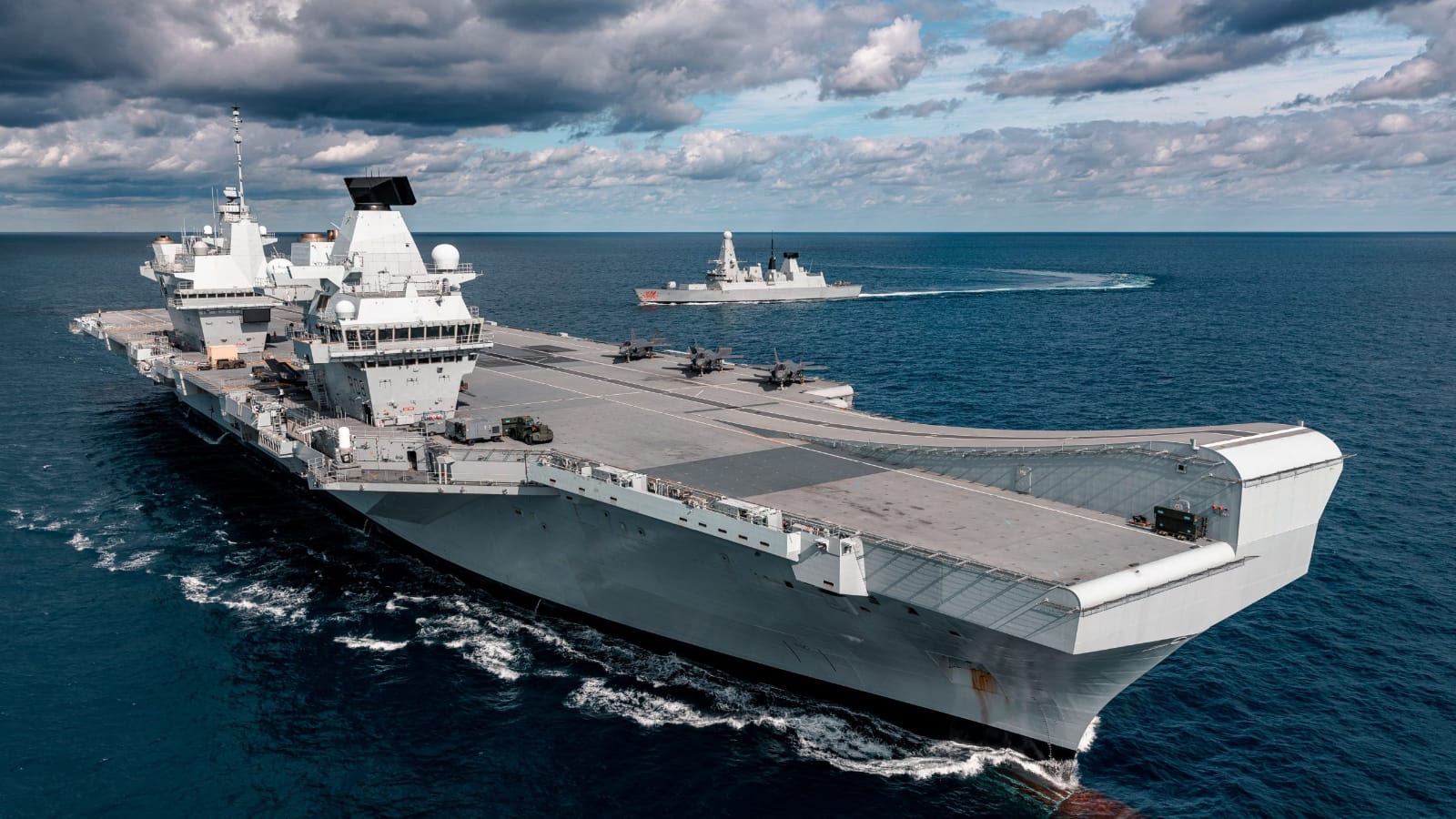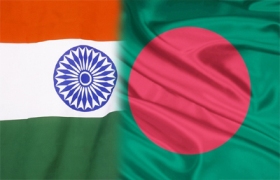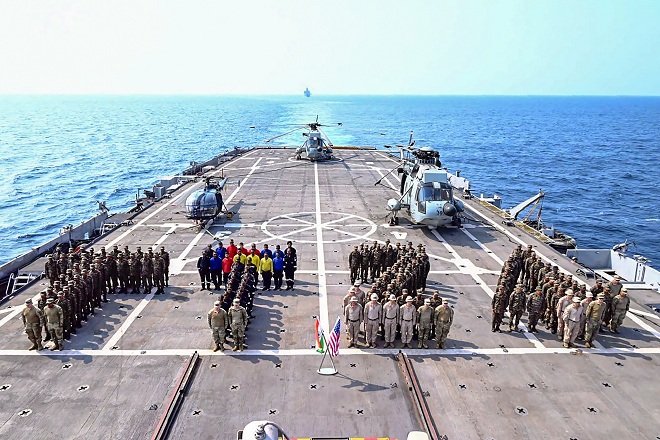
The maiden India-UK joint Tri-Service exercise 'KONKAN SHAKTI' is being held in the Arabian Sea between October 21 and 27, 2021. Photo: Indian Navy
NEW DELHI (PTI): India and the UK are carrying out a series of complex military drills as part of a tri-services wargame in the Arabian Sea, billed as the most ambitious exercise by the two countries ever.
The UK's Carrier Strike Group (CSG) led by its largest warship HMS Queen Elizabeth and several other frontline ships of the two navies are participating in the week-long 'Konkan Shakti' exercise that began on October 21, officials said.
A carrier battle group or carrier strike group is a mega naval fleet comprising an aircraft carrier, accompanied by a large number of destroyers, frigates and other ships.
The UK is only the third country after the US and Russia with which India is conducting a tri-services exercise.
Indian Navy's MiG 29K jets, the Royal Navy's F-35B aircraft and Indian Air Force's SU-30MKI and Jaguar fighters were among the key assets deployed for the exercise, the officials said.
Indian Navy Spokesperson Commander Vivek Madhwal said the sea phase of the maiden tri-service exercise commenced off the Konkan coast in the Arabian Sea on Sunday after the completion of an exhaustive harbour phase.
The British High Commission said personnel of all three services from both countries were participating in the tri-service exercise and described it as the "most ambitious conducted by the two countries to date".
It said the exercise is another step in deepening bilateral defence and security ties and boosting strategic cooperation in the Indo-Pacific region.
The high commission said the exercise provides an opportunity for the armed forces of two outward-looking, confident democracies to work in synergy and uphold our shared commitment to peace and security.
"The CSG's engagement with India showcases the deepening comprehensive strategic partnership. Both the Indian and the Royal Navy are blue-water, multi-carrier navies, which places us in a very exclusive club," said First Sea Lord Admiral and Chief of Naval Staff of the UK, Admiral Tony Radakin.
"Our growing interactions are a testimony to the shared commitment to a rules-based international system, a belief in the values of open trade, and in the importance of the freedom of the high seas – a right conveyed on all nations," he said.
Elaborating on the sea phase of the exercise, Commander Madhwal said all participating units were split into two opposing forces with the aim of achieving 'sea control' to land Army ground-troops at a pre-designated site.
He said one force comprised INS Chennai, other warships of the Indian Navy as well as HMS Richmond, the Royal Navy's Type 23 frigate.
The other force was operated under the UK's Carrier Strike Group comprising aircraft carrier HMS Queen Elizabeth, other UK and Netherlands naval ships, and Indian warships.
"The two forces integrated within their groups with exercises such as replenishment at sea approaches, air direction and strike operations by fighter aircraft (MiG 29Ks and F35Bs), cross control of helicopters (Sea King, Chetak and Wildcat), transiting through war-at-sea scenarios," he said.
The official said the simulated induction of Army troops was also undertaken and was followed by the setting up of a joint command operations centre. The two forces thereafter effected a rendezvous at sea with advanced air and sub-surface exercises.
The air operations included strikes on the combined formation by Indian maritime patrol aircraft (MPA) Dornier, fighters of the Indian Navy MiG 29Ks, Royal Navy's F35Bs and Indian Air Force's SU-30 and Jaguar jets, he said.
Commander Madhwal said sub-surface exercises with an Indian Scorpene-class submarine and underwater remote-controlled vehicle EMATT, operated by the Royal Navy, were undertaken through the night.
He said the superior level of interoperability displayed during the exercise reflected the high standards of professionalism and preparedness of both navies.
"It is also reflective of a high level of mutual trust and understanding that has been built over a period of many years," the official said.
 Previous Article
Previous Article Next Article
Next Article













The Indian Air Force, in its flight trials evaluation report submitted before the Defence Ministry l..
view articleAn insight into the Medium Multi-Role Combat Aircraft competition...
view articleSky enthusiasts can now spot the International Space Station (ISS) commanded by Indian-American astr..
view article